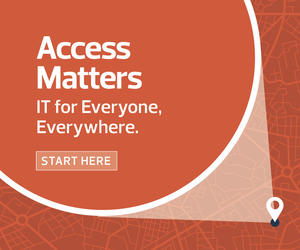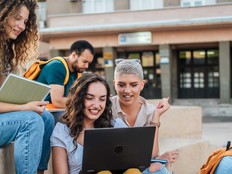Successful Implementation of Mobile Learning
OSU has provided all undergraduate students with iPad devices and cases. “This is our third year of doing that,” Tressler says, “and we have over 36,000 students across all six of our campuses who now have these devices.”
To deliver classroom content, “we use Canvas as our learning management system, both the browser version and the mobile app,” Tressler explains. “Students have access to that, and all of our courses are utilizing that to deliver course materials via mobile devices. That can be a course that was traditionally online or a course that is hybrid, with video content, e-books, podcasts. Faculty are making all sorts of materials available for students to consume.”
At Michigan’s Montcalm Community College, administrators have similarly leaned into mobility. Students can use Microsoft Teams to join classes via mobile, and Canvas to access course content, assignments, discussions and quizzes.
“We leverage Teams a lot. We rolled it out before COVID for collaboration, with staff and faculty training on that as a way to deliver education. When COVID-19 hit, we were in a good position to leverage Teams and some of the other mobile applications to extend the classroom out to students,” says David Kohn, associate director of information technology services.
“We are a rural commuter campus, so many students are looking at more than an hour’s drive to get to class. When you pile that on top of travel restrictions with COVID, that could have potentially been problematic,” Kohn says.
MORE ON EDTECH: What are the advantages of Wi-Fi 6 for online learning?
Technologies for Improving Connectivity During COVID-19
Other schools see connectivity as the key to keeping students engaged despite pandemic-related complications.
Take, for example, Lewis University in Illinois. “We looked for opportunities to continue providing access to our campus resources while still respecting things like social distancing,” says CIO LeRoy Butler, whose team deployed Cisco Aironet 1560 access points to create Wi-Fi zones in parking lots and other outdoor spaces. “It gives them a way to safely access resources on campus without going into the buildings.”
MORE ON EDTECH: What technologies do colleges need for outdoor classrooms?
Likewise, OSU administrators have deployed more than 300 HPE Aruba AP-375 and AP-377 access points to create outdoor connectivity at multiple regional campuses.
“We don’t normally cover parking lots, but at the start of COVID-19, we didn’t know if people wanted to stay 6 feet apart or 100 feet apart. We wanted them to be able to be in their vehicles with their windows up and still attend to business,” says Mike Hiatt, OSU’s director of networking.












